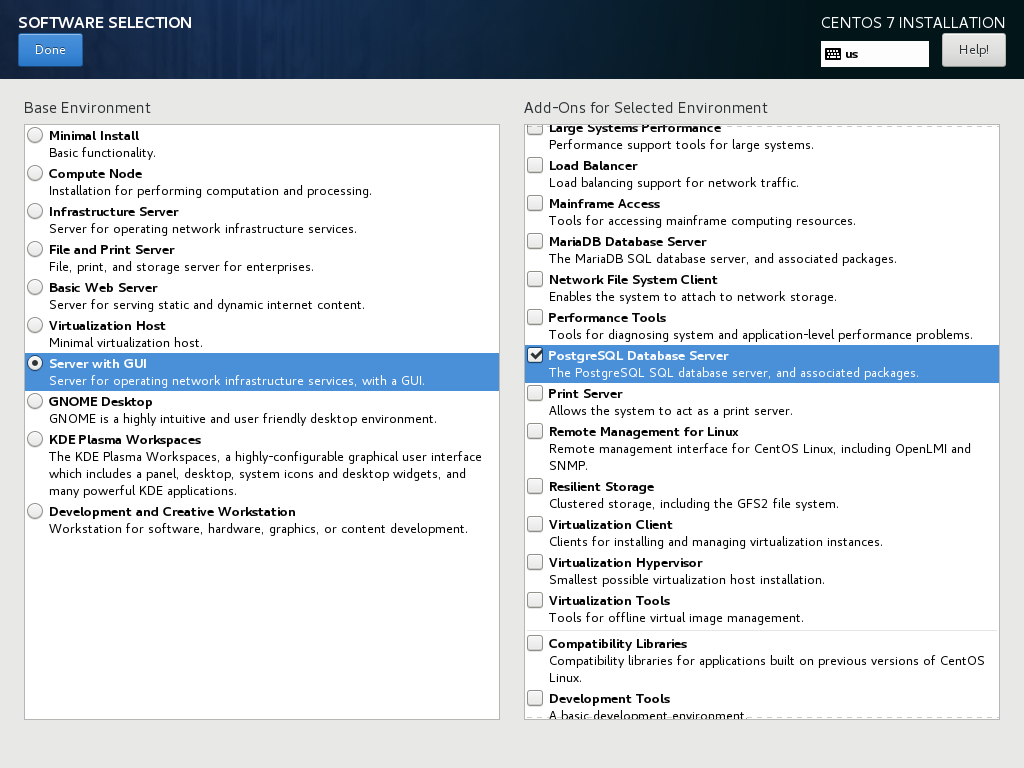Software Selection
To specify which packages will be installed, select Software Selection at the Installation Summary screen. The package groups are organized into Base Environments. These environments are pre-defined sets of packages with a specific purpose; for example, the Virtualization Host environment contains a set of software packages needed for running virtual machines on the system. Only one software environment can be selected at installation time.
For each environment, there are additional packages available in the form of Add-ons. Add-ons are presented in the right part of the screen and the list of them is refreshed when a new environment is selected. You can select multiple add-ons for your installation environment.
A horizontal line separates the list of add-ons into two areas:
-
Add-ons listed above the horizontal line are specific to the environment you selected. If you select any add-ons in this part of the list and then select a different environment, your selection will be lost.
-
Add-ons listed below the horizontal line are available for all environments. Selecting a different environment will not impact the selections made in this part of the list.

The availability of base environments and add-ons depends on the variant of the installation ISO image which you are using as the installation source. For example, the server variant provides environments designed for servers, while the workstation variant has several choices for deployment as a developer workstation, and so on.
The installation program does not show which packages are contained in the available environments. To see which packages are contained in a specific environment or add-on, see the repodata/*-comps-variant.architecture.xml file on the CentOS Installation DVD which you are using as the installation source. This file contains a structure describing available environments (marked by the <environment> tag) and add-ons (the <group> tag).
|
The pre-defined environments and add-ons allow you to customize your system, but in a manual installation, there is no way to select individual packages to install. If you are not sure what package should be installed, select the |
Alternatively, automating the installation with a Kickstart file allows for a much higher degree of control over installed packages. You can specify environments, groups and individual packages in the %packages section of the Kickstart file. See Package Selection for instructions on selecting packages to install in a Kickstart file, and Kickstart Installations for general information about automating the installation with Kickstart.
Once you have selected an environment and add-ons to be installed, click Done to return to the Installation Summary screen.
Core Network Services
All CentOS installations include the following network services:
-
centralized logging through the
rsyslogservice -
email through SMTP (Simple Mail Transfer Protocol)
-
network file sharing through NFS (Network File System)
-
remote access through SSH (Secure SHell)
-
resource advertising through mDNS (multicast DNS)
Some automated processes on your CentOS system use the email service to send reports and messages to the system administrator. By default, the email, logging, and printing services do not accept connections from other systems.
You can configure your CentOS system after installation to offer email, file sharing, logging, printing, and remote desktop access services. The SSH service is enabled by default. You can also use NFS to access files on other systems without enabling the NFS sharing service.